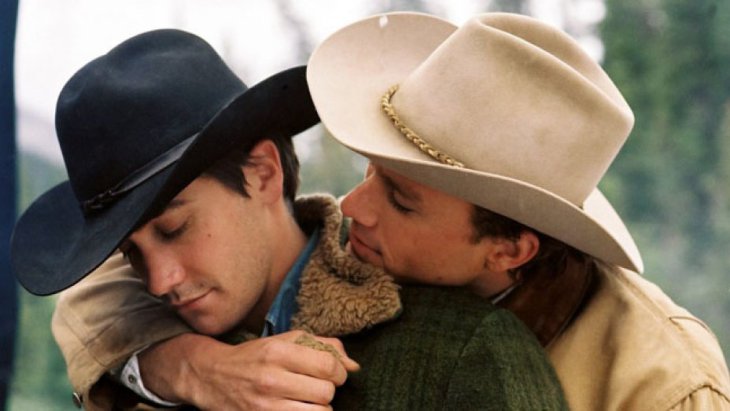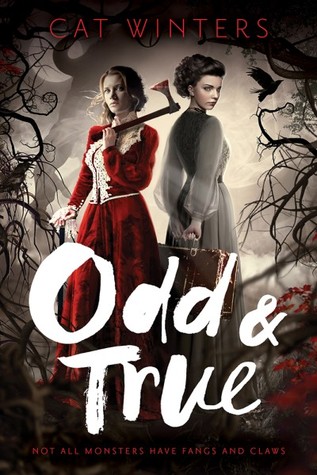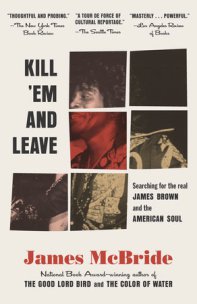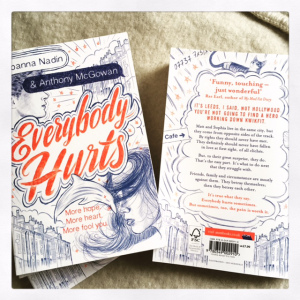
Recently in Australia the LGBTQ community has become a major topic of conversation, with the same sex marriage vote currently occurring. This vote also brings up the issue of members of the LGBTQ community still not having the same rights as cisgender Australians who are attracted to the opposite sex. Being raised by lesbian mothers, I was raised without prejudice towards the LGBTQ community, however my peers have not always felt the same way, often feeling the need to insult my mothers and me. In fact, one of the major arguments against same sex marriage, comes from Lyle Shelton (cited in Knight 2017) of the Australian Christian Lobby, who argues that children need both a mother and father to be “normal”.
My birth mother Melissa is a lesbian and for the past 21 years has raised me with her partner and my other mother, Alisha by her side. As I mentioned before, people often criticise same sex couples who raise children, citing it as unfair or claiming the child has missed out on a masculine or feminine influence, however this is not the case. Both of my mothers have both a masculine and feminine side to them and I have never gone without any lesson or opportunity.
Despite the fact that the LGBTQ community do not have equal rights or respect even, society has come a long way, compared to 20+ years ago, due to media inclusion. It is in the 1990’s that the the New Queer Cinema movement began, with more films being directed by gay/lesbian directors, and featuring homosexuality as a major theme (Aaron 2004, p.1).
The beneficial effect of the LGBTQ community being represented in film, is evident with the appearance of recent campaigns for Elsa from Frozen (2013) and Captain America (Captain America: The First Avenger 2011), to have same sex relationships in upcoming films (Crosby 2016). In fact, early representations of New Queer Cinema have seen gay characters evolve from stereotypes like the gay best friend, to fully fledged main characters, with examples being found in films like Carol (2015).
Two films apart of the New Queer Cinema movement, that have always resonated with me are Boys Don’t Cry (1999) and Brokeback Mountain (2005), which both address the serious realities of the LGBTQ community, without portraying them in a condescending or negative manner. These kinds of films are important as they facilitate opportunities for understanding among groups and build bridges for future equality.
Firstly, Boys Don’t Cry (1999) tells the story of real life transgender man Brandon Teena, who was raped and murdered in December 1993. The real Brandon Teena (who the film was based on), faced a great deal of controversy for just being himself, and was kicked out of home and ostracized by those who discovered he was born a woman. After relocating due to harassment, Teena moved to Nebraska, where he began to date a young woman, Lana Tisdale.
Boys Don’t Cry trailer
After being arrested for previously committed crimes, Teena was outed as a woman, facing persecution from those who he had come to know as friends. After a Christmas party in 1993, Teena was raped by Tom Nissen and John Lotter, who murdered him days later, on New Years Eve (Markel 2014). Even after his death, Teena continued to be denied rights as a transgender man, with his gravestone even identifying him as ‘Daughter, Sister & Friend’ (Markel 2014).

While the injustices Brandon Teena suffered are awful and inexcusable, Ryan Sallans (cited in Markel 2014), a transgender man and author, highlights that Teena’s murder ignited anger, that transformed into activism for the transgender community.
Brokeback Mountain (2005) takes a similar approach to Boys Don’t Cry (1999), representing both the stigma that gays and lesbians face, while providing insight into what the emotional process of struggling with sexuality. The film was the first of its kind, portraying a classic love story with a same sex couple and having the couple played by Hollywood A-listers. The film and its short story counterpart, where also original in the way they approached masculinity and homosexuality as elements that can co-exist.
Brokeback Mountain trailer
‘Of course there were and are gay men in the world of cattle and horses since the first cow spent the winter on the plains west of Laramie, but the great fiction that evolved in the 19th century and lay over the ranching West is that all cowboy horsemen and ranch hands were heterosexual, strong and fearless, brave and handsome, and though tough and daring, they were shy, sparing of words, always kind to orphaned doggies and children, extravagantly polite to women, etc. All this made up an irresistible masculine ideal that had/has political value. For many, the cowboy image became a potent symbol of American men. It was this confrontation with unreality that the story wanted to show through a look at two characters living in the real world of homophobic closeting.’ – Annie Proulx (cited in Hicklin 2015).

The story begins in 1963 and follows the longstanding on and off relationship of Jack Swift (Jake Gyllenhaal) and Ennis Del Mar (Heath Ledger), who struggle with their attraction and love for each other. Over the years, Ennis and Jack engage in relationships with women and try to deny their feelings and occasionally meet up to rekindle their love. The story is a tragedy, with the men choosing fear over true happiness and Jack passing away before they ever get a real chance at a relationship.
Both Boys Don’t Cry (1999) and Brokeback Mountain (2005) are important in the LGBTQ movement, as an increased presence of the community in media, improves relations with the public (McClendon 2015). This has been proven time and time again, by public figures like Ellen DeGeneres, who revitalised her career after coming out and shows aimed at youth, often representing the LGBTQ community (Glee, Pretty Little Liars and Shadowhunters).
With gender and sexuality constantly evolving, it is important for both youth and adults to be educated on equality and fairness towards the LGBTQ community. If you know a youth who is struggling with their sexuality and gender identity please reach out to minus 18, an organisation for LGBTQ teens. For more information visit their website at https://minus18.org.au/.
References
Aaron, M 2004, New Queer Cinema: A Critical Reader, Edinburgh University Press, United Kingdom.
Boys Don’t Cry 1999, Fox Searchlight Pictures, United States.
Brokeback Mountain 2005, Focus Features, United States.
Captain America: The First Avenger 2011, Paramount Picture, United States.
Carol 2015, The Weinstein Company, United States.
Crosby, S 2016, ‘Gender and Sexuality in Film: Have We Really Come Along Way?’, The Radical Notion, 25 June, viewed 15 September 2017, http://www.theradicalnotion.com/gender-sexuality-film-really-come-long-way/.
Frozen 2013, Walt Disney Studios Motion Pictures, United States.
Hicklin, A 2015, ‘Brokeback Mountain: 10 Years On’, OUT Magazine, 28 July, viewed 16 September 2017, https://www.out.com/out-exclusives/2015/7/28/brokeback-mountain-10-years-oral-history.
Knight, D 2017, ‘Same-sex marriage postal survey: the five worst arguments for voting No’, ABC News, 6 September, viewed 18 September 2017, http://www.abc.net.au/news/2017-09-06/same-sex-marriage-five-worst-arguments-for-no-campaign/8871020.
Markel, K 2014, ‘The Legacy of the “Boys Don’t Cry” Hate Crime 20 Years Later’, Buzzfeed, 10 January, viewed 16 September 2017, https://www.buzzfeed.com/katrinamarkel/the-legacy-of-the-boys-dont-cry-hate-crime-20-years-later?utm_term=.xm43OxKNGd#.pmyaAdj1gX.
McClendon, L 2015, ‘A Look at Television’s Role in LGBT Acceptance’, Annenberg Media Centre, 19 October, viewed 17 September 2017, http://www.neontommy.com/node/94691.
Advertisements Share this:




